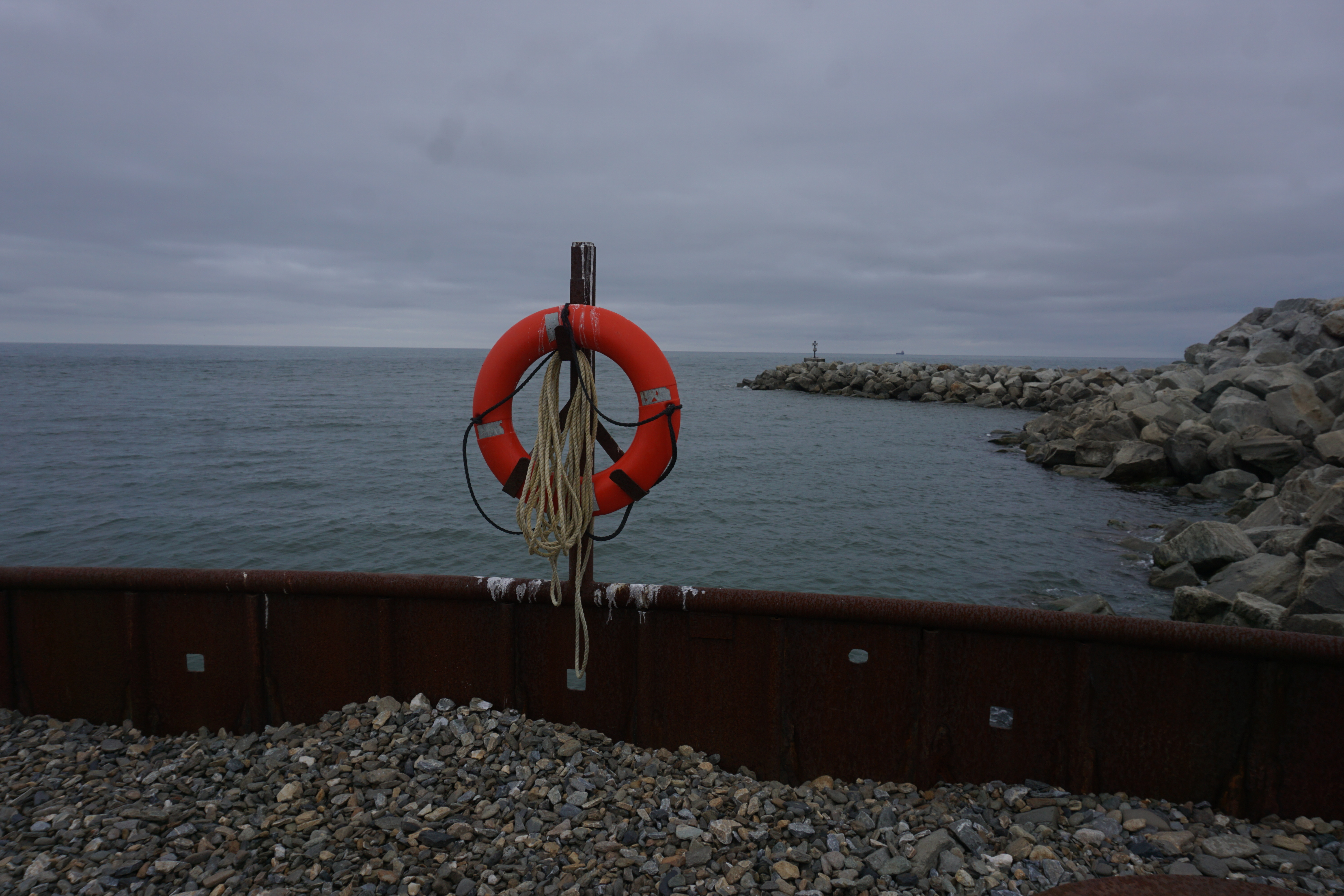As sea ice melts, momentum grows for Nome’s Arctic port plan
The Western Alaska port is already busy — and climate change means it will keep getting busier.
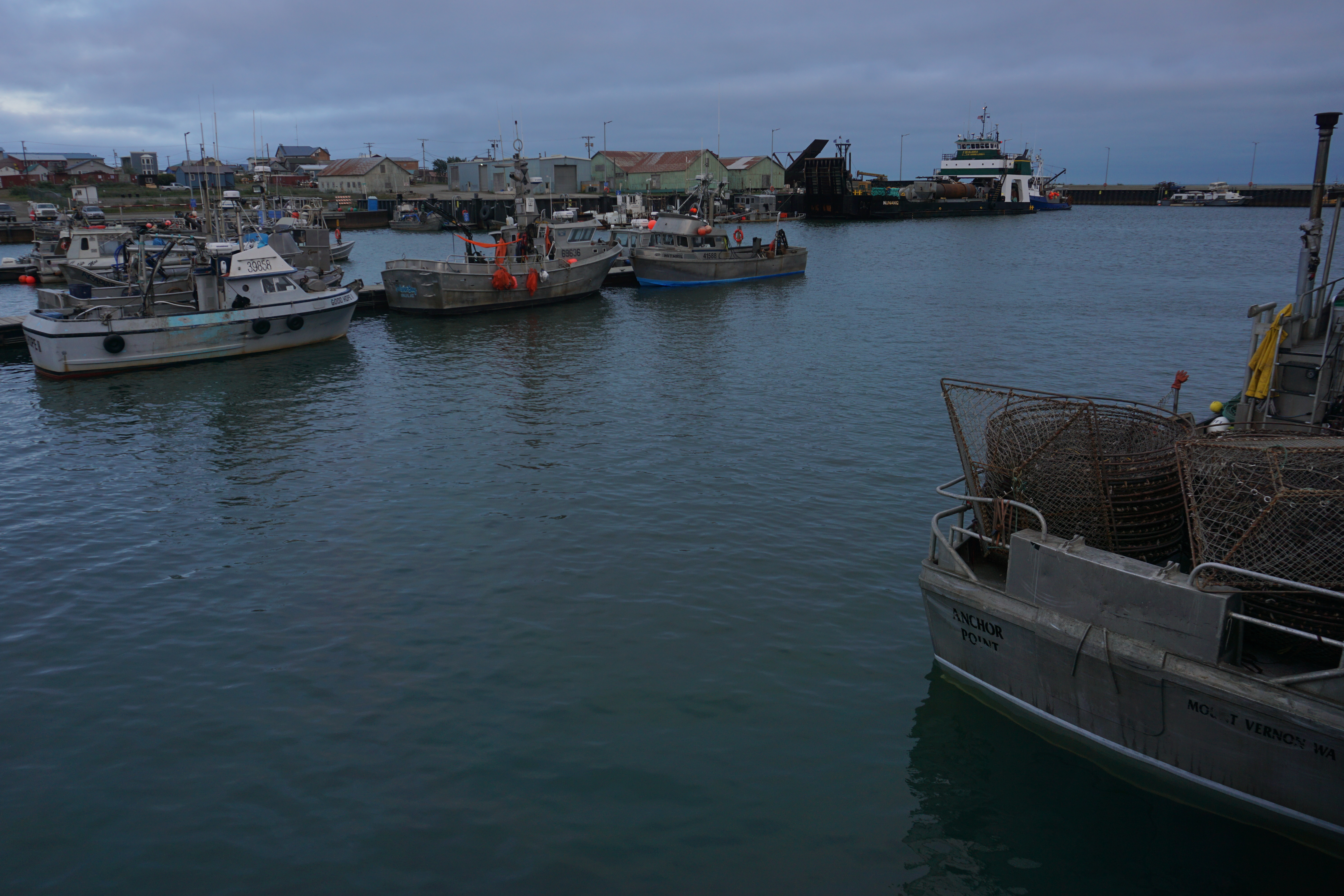
The Bering Strait has been a crossing point for millennia.
In past geologic eras, it was a land link that allowed animals and people to migrate between Asia and North America. Since the end of the last Ice Age, its waters have been the passageway between continents and between the Pacific and Arctic oceans.
Now, as sea ice diminishes and interest in Arctic commerce intensifies, the Alaska city of Nome plans to be at the center of what is expected to be a far-north shipping boom. The city is bidding to expand its existing regional-focused port into what would be the only deepwater port in the U.S. Arctic.
[Nome eyes a significant port expansion — but critics wonder if it will be enough]
Nome Mayor Richard Beneville sees shipping as key to a sustainable future for the city that was born out of a spectacular but brief early 1900s gold rush. The port, he believes, can make Nome the full-service support center for traffic passing through the narrow strait.
“There’s a wonderful word in the English language: chandlery,” he said. The word, which traces back to Medieval candle-sellers, has come to mean a supplier of all sorts of materials, provisions and services for the nautical trade.
Climate change brings havoc to the natural environment, Beneville said, but it also brings a silver lining: the opportunity for Nome to become the chandlery of the U.S. Arctic. “In everything, there is good and bad,” he said.
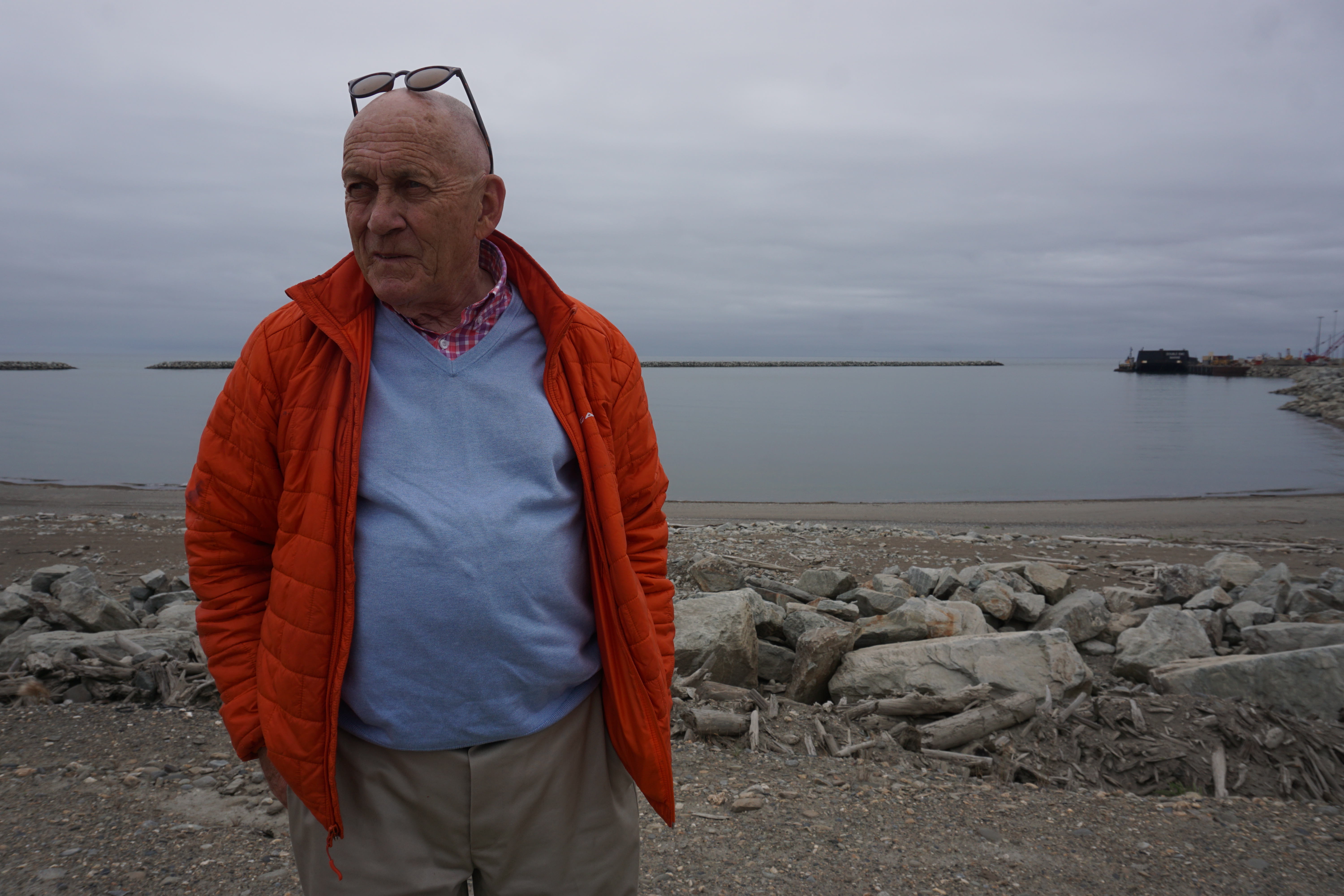
Technically, Nome is south of the Arctic Circle, but only barely so. It is certainly a lot closer than the full-service deepwater U.S. port that is, for now, the nearest to the Arctic — the port of Dutch Harbor at the Aleutian Island community of Unalaska, 1,000 miles south of the Arctic Circle.
“Putting a deepwater port in Nome is a critical piece of the existing opportunities in the Arctic, in my opinion, because there’s no deepwater port north of Dutch Harbor,” said Joy Baker, Nome’s port director.
[Alaska senator calls for a system of U.S. Arctic ports]
Nome may be best known as the finish line of the Iditarod Trail Sled Dog Race, but it has other important attributes. Located on the Seward Peninsula, a point of land that juts out toward Russia, it is the biggest U.S. community in the Bering Strait region, with about 3,800 people. It has an airport, hospital, commercial center and numerous other amenities that make it a regional hub. It is located in one of the fastest-warming parts of the world, with an ecosystem that is transforming as sea ice vanishes.
Its port already serves steadily growing vessel traffic, including ships heading in and out of the Arctic through the chokepoint between Alaska and Russia. And it has been identified by the U.S. Army Corps of Engineers, through a winnowing process that started in 2008, as the most logical site for what would be the first deepwater U.S. Arctic port, something that government officials argue is needed to help safely manage ship traffic.
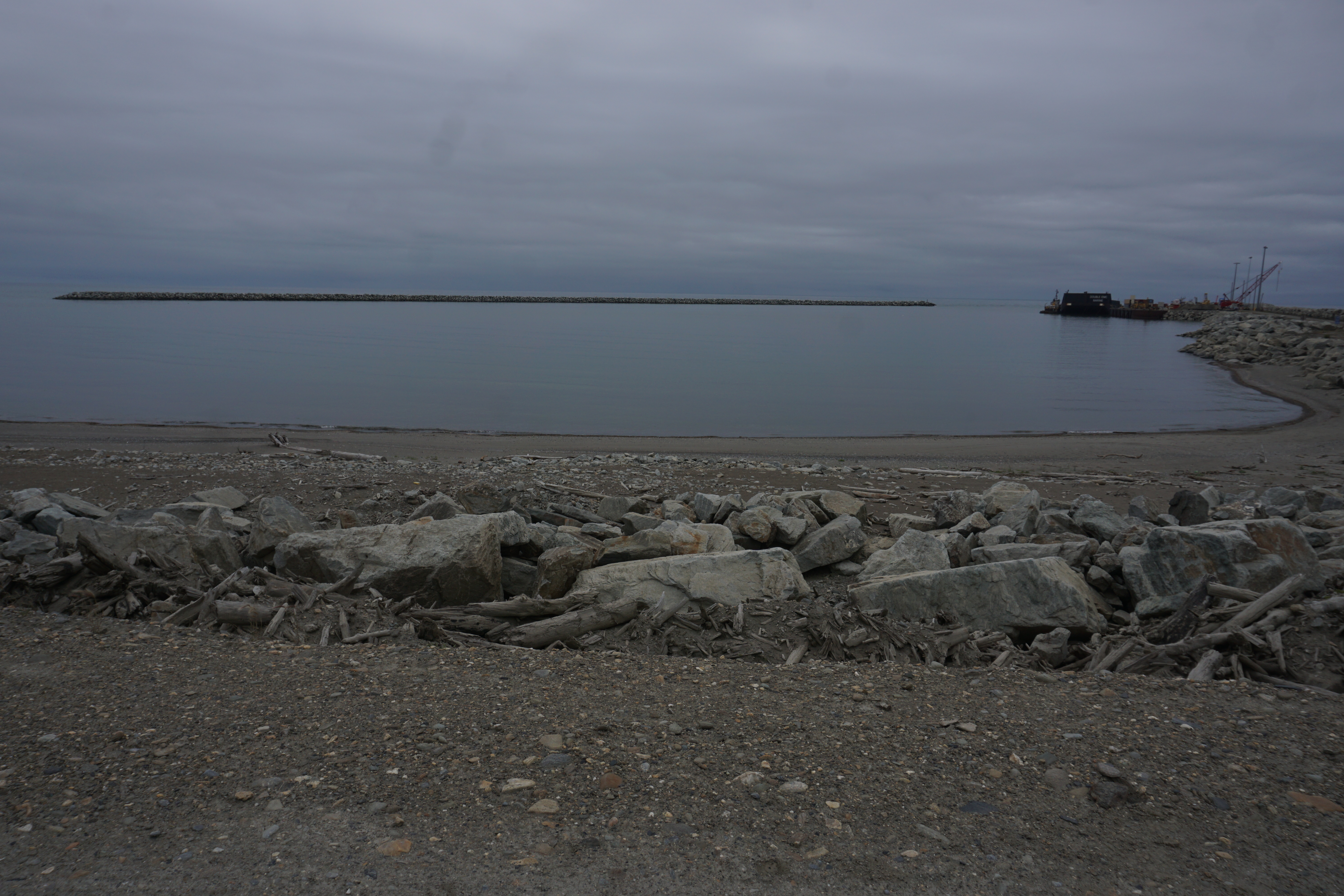
The specific plan, as detailed in a draft report issued by the Corps in May, is for an existing causeway that stretches about 3,000 feet into Norton Sound to be more than doubled, and bent at the end into an L to shelter the space within. A second road-topped causeway would extend out to the same distance, replacing the rocky breakwater that currently curves into what is now the outer harbor. The seafloor would be dredged at the new outer docks, lowering it from its current depth of 22.5 feet down to 40 feet, deep enough to accommodate the biggest ships traveling the region.
The Corps is expected to release a final version of the port study. If all the pieces subsequently fall into place — including Congressional action and appropriation and some kind of financing from the city to help pay a cost that, for now, is estimated at roughly $500 million — construction could be underway by the mid-2020s.

Even without port expansion, traffic in and out of Nome has increased dramatically as ice has melted. In 1990, there were just 34 vessel calls at the port. Now about there are about 750 a year, Beneville said. And that number does not include the deep-draft ships that have to anchor outside of the existing port, activity that has also boomed over the past decade.
The fleet calling on Nome comprises a wide mix: fishing boats targeting salmon, crab and other commercial species; research ships; Coast Guard vessels; barges and cargo ships hauling everything from groceries to gravel; cruise and tour ships; and an eclectic assortment of boats carrying dredging equipment for the only-in-Nome business of offshore gold dredging. Nome serves as a destination for a select group of adventure tourists, a hub for dozens of far-flung villages and a staging ground for industrial materials heading to the North Slope.
Increasingly, Nome is hosting hefty Arctic-bound vessels, like the luxury cruise ships that have pioneered the once-impenetrable Northwest Passage. For now, those big ships have to anchor far from the harbor, where water is sufficiently deep, and ferry passengers into town in small boats — a difficult task if waters are choppy.
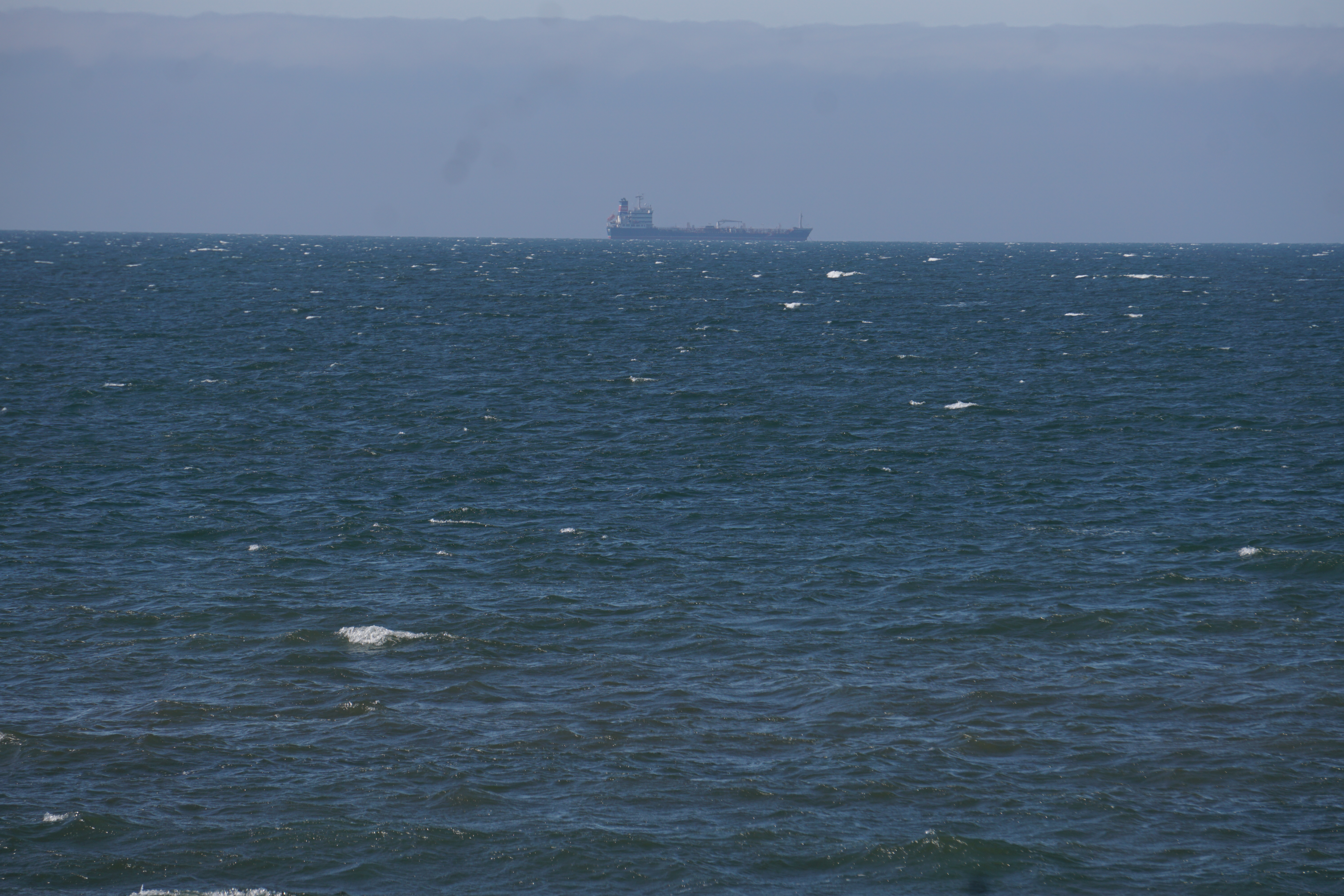
The expansion, as envisioned, would provide dock space for vessels like the Maasdam, a 719-foot Holland America cruise ship that stopped in Nome on July 21. A community celebration to greet the Maasdam was called off because seas too rough that day to offload passengers into the small boats. If the expansion had been in place, passengers could have stepped onto the dock and come town, Baker noted.
The expansion would also make it possible for tanker vessels to dock, discharge their cargo into a pipeline system and depart within hours. Today’s situation is quite different: A chartered tanker full of fuel sits for months offshore, just beyond the three-mile state territorial boundary, to serve as a “floating gas station,” as Beneville puts it, for smaller ships that sail up to it.
Climate change squeezes the existing port
Climate change has other effects: As ice arrives later and melts earlier, the shipping season is lengthening.
“It used to be when I came on in April we have 100 percent cover of ice,” said Nome Harbormaster Lucas Stotts, whose annual work contract starts on April 1. “We would never receive vessels prior to June 1,” he said. And vessels were quick to depart in the fall.
But with freeze-up delayed and melting starting earlier, the ship pattern has changed. Last season, some vessels were in the port in October and even November, Stotts said. This year, the first vessel came in on May 23, and ships could have arrived earlier; by mid-May, the outer harbor was completely clear of ice, he said.
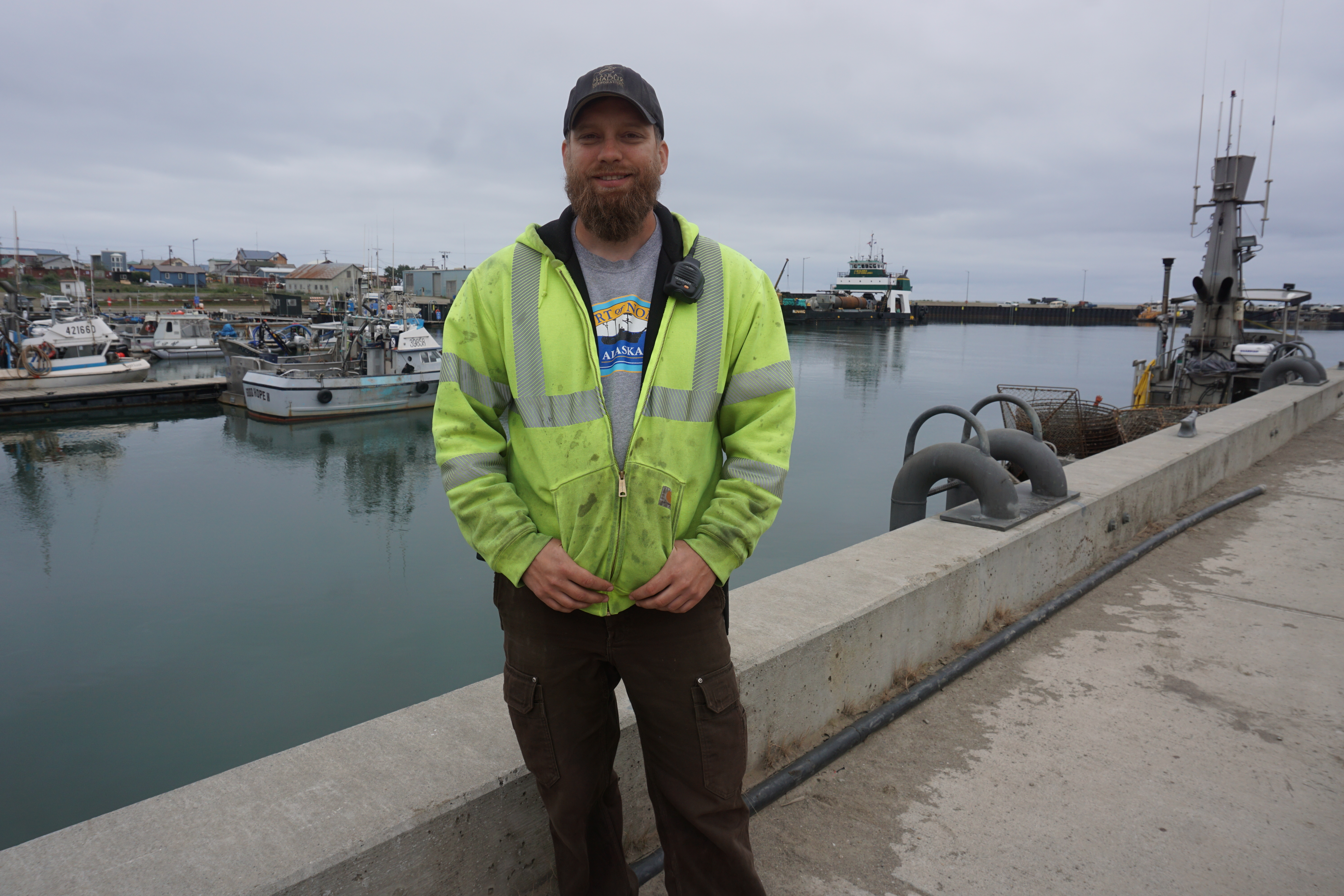
The Corps document warns that the shipping season is on target to expand to 240 days in the near future, and if all multiyear ice disappears, the remaining winter ice will be so thin that year-round operations are viable for “appropriately designed vessels.”
For Stotts, the improvements envisioned in Nome’s harbor expansion would address a lot of current problems. He is most enthusiastic about the promise of greater protection from the waves that sweep in from the south, and now do so for longer periods of the year.
“Having more dock space, having more docks, having deepwater areas, that’s all very good stuff and it’s all needed. But the biggest thing for me is protection from the weather,” he said.
When winds blow from the south, ships in the port have to play a musical-chairs-like game to avoid being smashed against the existing docks or against each other. They have to “jog” around the open waters outside the harbor until things settle sufficiently to make docking safe, he said. More exposure to open water also increases the need for maintenance and repairs, he said.
Warming has other implications.
As fish stocks shift north, more vessels might use Nome as their base of operations. The king crab harvests, for which Norton Sound is famous, have been “abysmal” this year, Stotts said, but Pacific cod and pollock, species normally found in more southern parts of the Bering Sea, have moved in. Stotts said he has been fielding inquiries from major fishing companies seeking information on Nome’s services and amenities.
Last year, the last fishing vessel in the port was a cod catcher-processor, the Northern Leader, that arrived on Nov. 8 and left a day later, Stotts said. The ship, homeported 630 miles to the southeast in Kodiak, was in Nome for an unusual assignment: the filming of a dog-food commercial. Locals suspect it might also have spent some time in the region scouting possible far-north cod-fishing sites, Stotts said.
Worries about expansion
Not everyone is excited about port expansion.
Kawarek Inc., a Nome-based nonprofit representing villages and tribes, advocates for better marine safety in the increasingly busy Bering Strait waters. It has also made some pointed critiques of city leaders’ gung-ho port-expansion boosterism.
Negative impacts of port expansion and the expanded shipping that would accompany it, Kawerak has said in its official comments on the plan, could include more oil spills and marine wrecks, chronic water and air pollution, industrial noise that could disrupt marine mammals, construction and erosion damage to archaeological and grave sites and a combination of those and other effects. Kawerak has challenged the Corps’ conclusion that port expansion would create “no significant impact.”
There has been one important step taken to addressing concerns about impacts of increased vessel traffic. The International Maritime Organization’s last year established designated Bering Strait-area shipping routes and buffer zones protections for environmentally sensitive areas, a victory for environmentalists and the indigenous peoples on both sides of the strait.
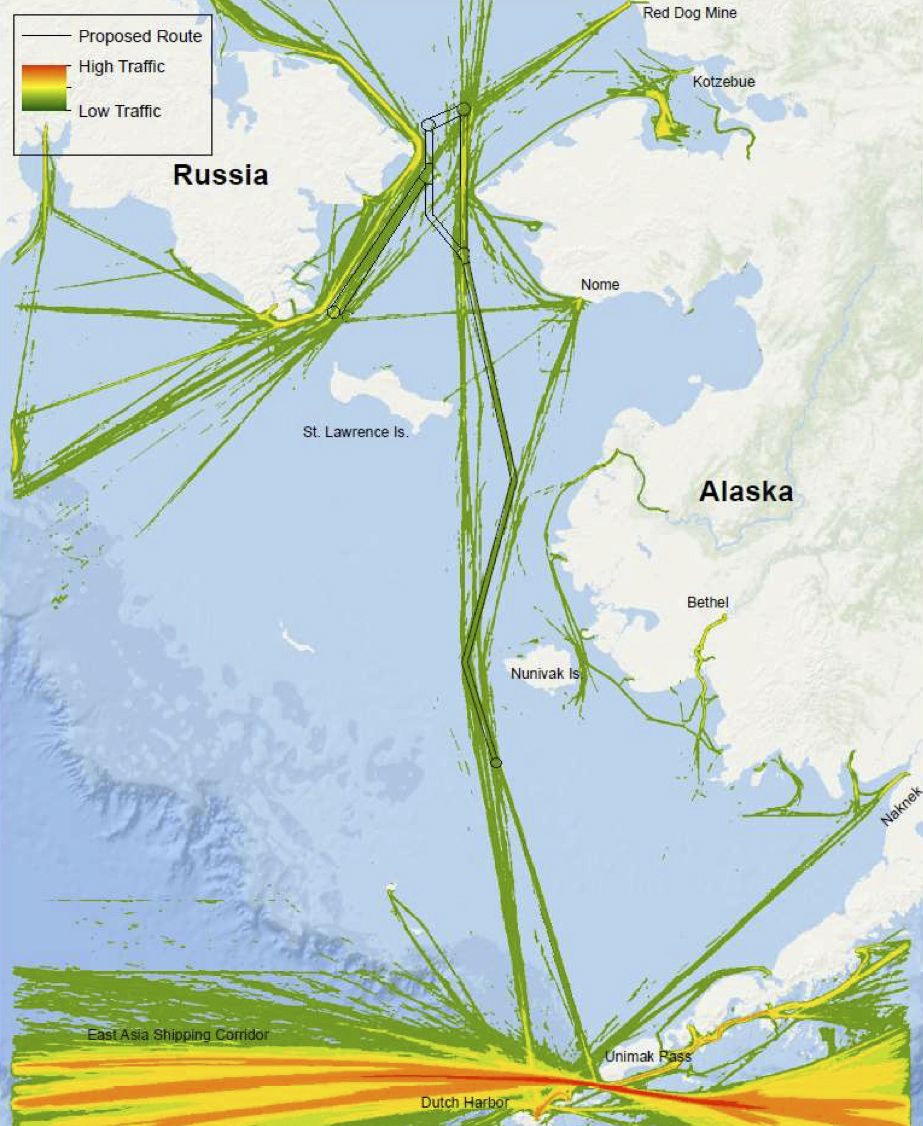
But there is unfinished business when it comes to chronic marine pollution, like vessel discharges of oily bilge and sewage, and various ship-animal conflicts.
The IMO has yet to ban the use of heavy fuel oil in the Arctic, though it is moving to enact such a ban, similar to the one that already exists in Antarctic waters. When spilled, heavy fuel oil is much more environmentally damaging than are lighter petroleum products; when burned, heavy fuel oil produces large amounts of black carbon that pollutes the air and darkens snow and ice, setting up even faster melt.
[The push to phase out heavy fuel oil in the Arctic continues]
Underwater noise in the region is not yet well understood and is the subject of ongoing study, but projections are for more conflicts as both ships and marine mammals move north into the narrow strait and beyond.
There are hints that underwater noise is becoming a problem. A deep-diving beaked whale found dead in 2013 at St. Lawrence Island at the southern edge of the Bering Strait may have been a victim. The necropsy revealed masses of air bubbles in its brain, a sign that it had shot up from the depths too quickly, possibly after being spooked by noise.
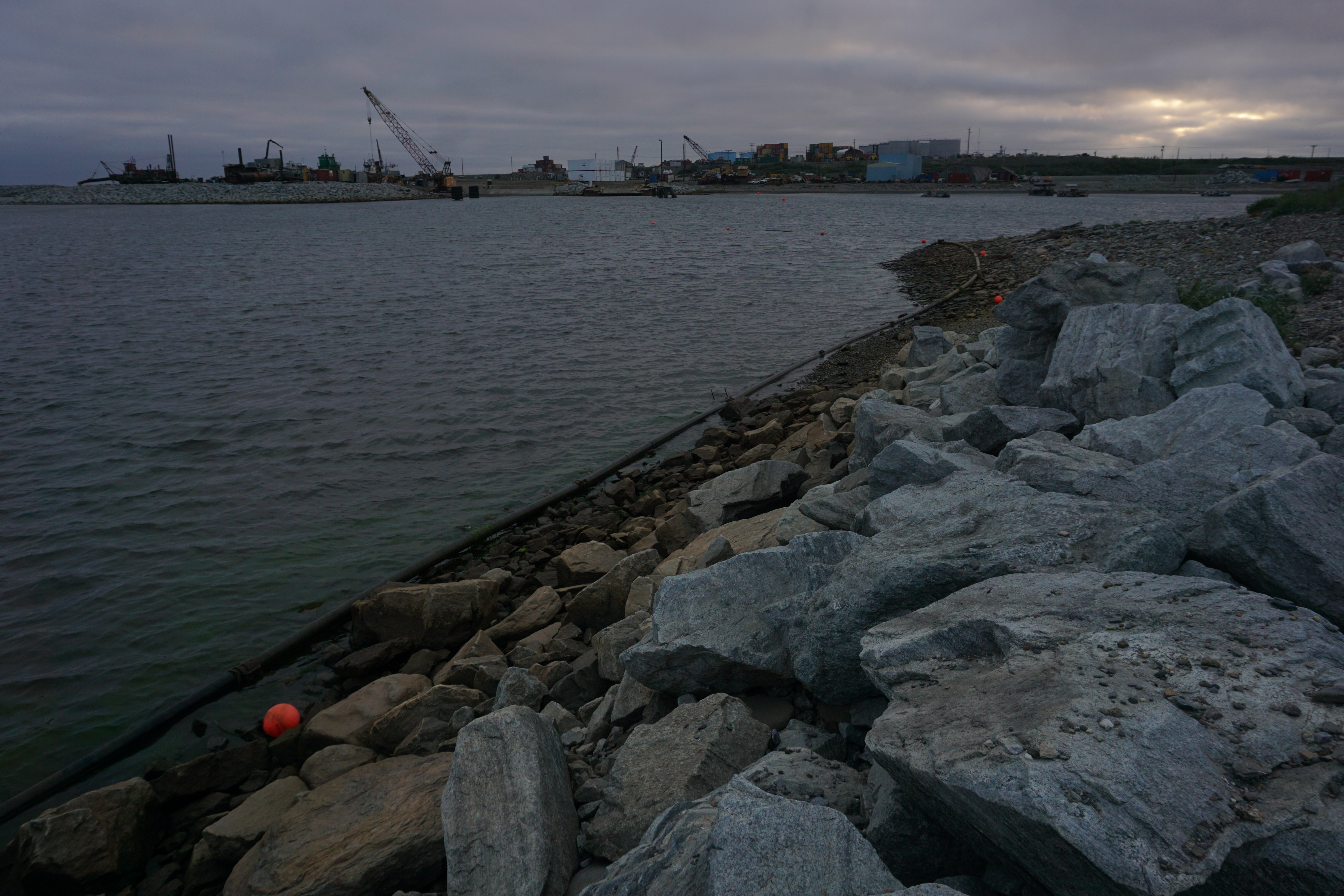
For Austin Ahmasuk, there are plenty of reasons to oppose Nome’s port expansion.
Speaking for himself (not for Kawerak, where he works as a marine specialist) Ahmasuk has a list of complaints about not only the expansion plan but the port as it exists today.
Located at the mouth of the winding Snake River, the port developed in bits and pieces over the past century, with plenty of mistakes made along the way, Ahmasuk argues. Native people were evicted from a traditional living space called sanispik, meaning “place on the side,” and his own family home was destroyed as the port grew, he said in his four-page comment letter to the Corps. “The port of Nome has destroyed Alaska Native people and history and may significantly change Nome,” he said in his comment letter.
An expanded causeway will force small subsistence boats far from shore and into dangerous currents, harm essential fish habitat and put Native historic and cultural sites at further risk, he said in his letter, which pleaded for a full environmental impact statement. He characterized claims of potential benefits as exaggerated or baseless, and questioned the need for the project, which he called “port development for the sake of port development.”
Shipping booms past and future
Bering Strait history suggests a cautious approach might be advisable on maritime matters. While climate change-caused ice loss is new, occasional waves of ship traffic into this part of the world are not.
In the mid-19th century, when commercial whaling in Alaska waters was at its frenzied peak, hundreds of ships poured into the Arctic through the Bering Strait. The ecological toll was steep. Whale populations were hunted to near-extinction. When whales became scarce, whalers hunted masses of walruses, killing an estimated 140,000 of them, according to experts John Bockstoce and Daniel Bodkin.
Whalers came despite the dangerous freeze, and “few ships returned from these regions without showing heavy scars and wounds as the result of their contests with the ice, while many vessels laid their bones in these desolate seas or in the rock-bound coasts,” wrote author Alexander Starbuck in his famous 1876 history of the American “whale fishery.”
After gold was discovered in late 1898, thousands of people inundated Nome, temporarily making it Alaska’s biggest city. Ships unable to navigate Norton Sound’s shallow depths anchored far offshore, forcing hordes of fortune-hunters to wade through the waters to reach the “golden sands of Nome.”
A 1900 U.S Geological Survey report describing the Seward Peninsula mineral potential bemoaned the dearth of harbor facilities in Nome. Considering that the town handled more than 5,000 passengers and thousands of tons of freight in a single year, “the lack of harbor facilities at present at Nome is embarrassing,” said the report.
Even then, there were visions of a sophisticated port.
“Realizing the great need of harbor facilities here, it is reported that a number of enterprising men have organized a company and are negotiating to construct at Nome and extensive deep-water pier or wharf, to extend nearly a mile from shore, to a point where ocean vessels can discharge their cargoes into it, when they will be brought ashore by tramways to warehouses along the beach,” said the USGS report, titled “Preliminary Report on the Cape Nome Gold Region.”
It may have taken more than a century, but now the ambitions are realistic, Nome port boosters argue. U.S. government and business leaders, they say, are paying serious attention to Arctic shipping and to Nome’s role in meeting U.S. Arctic needs.
“You don’t have to re-sell it every time,” Beneville said. “Finally, finally, the awareness of the public is there, is beginning to understand the importance of the Arctic and how vital it is to us and how we are so far behind.”
